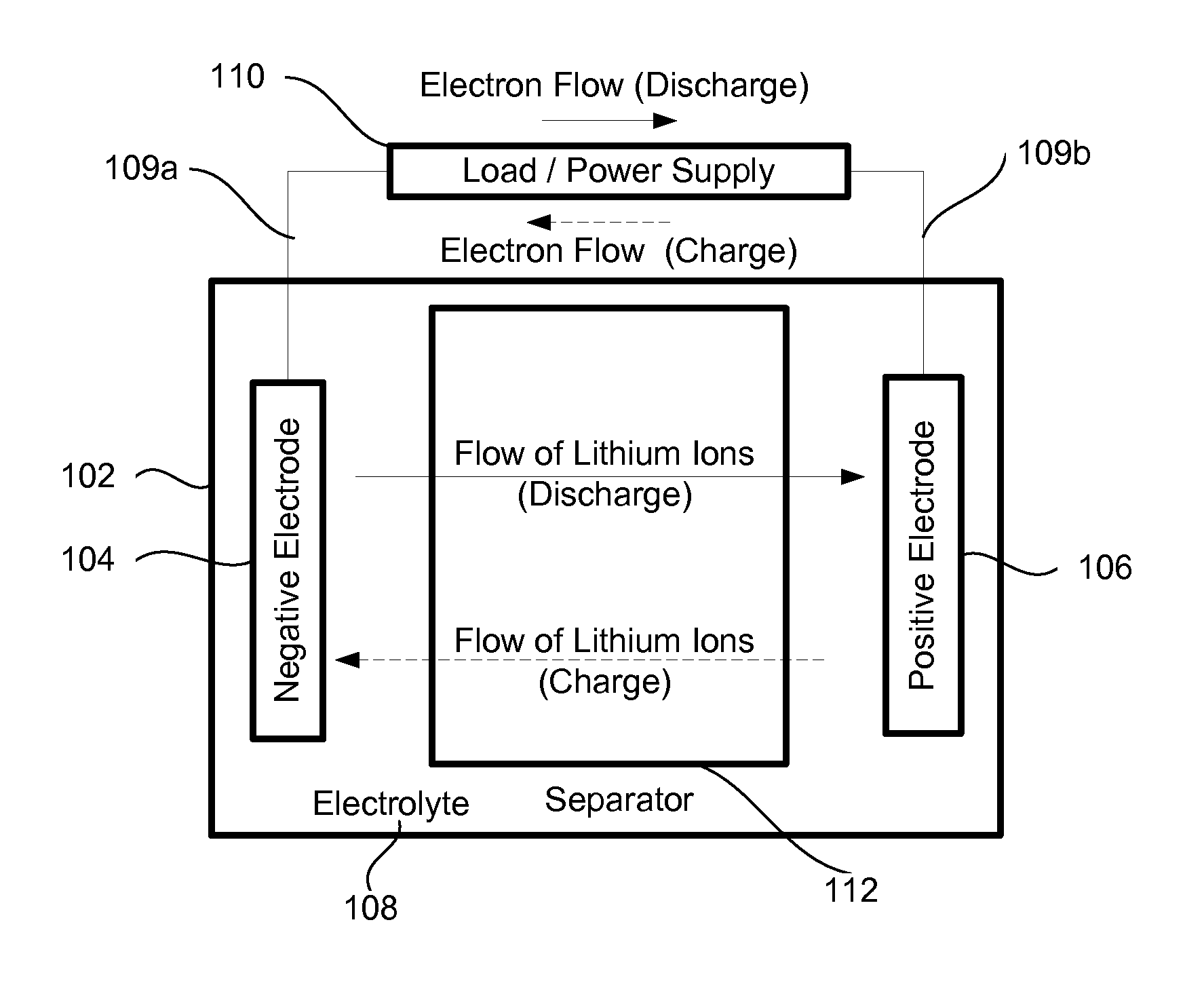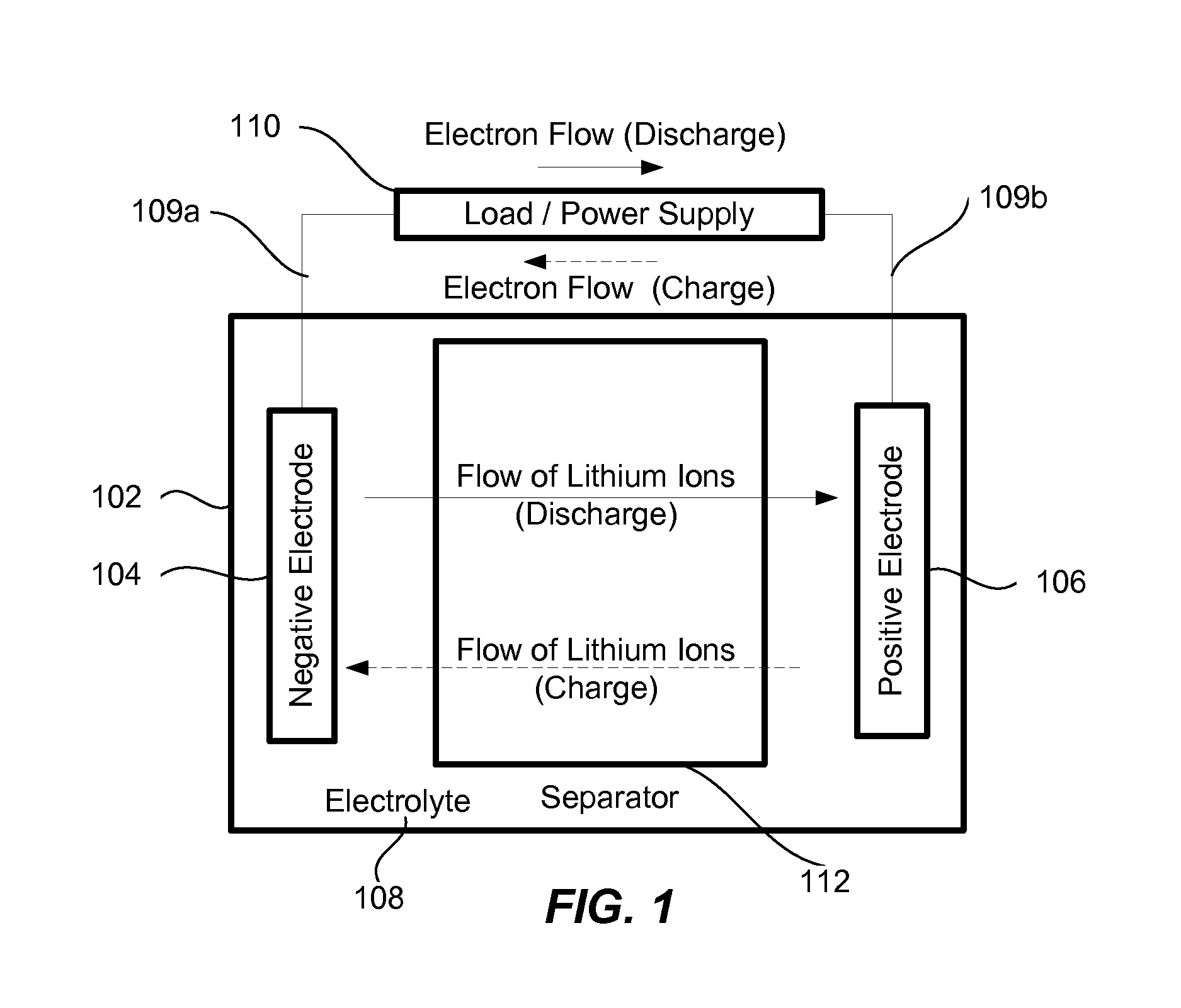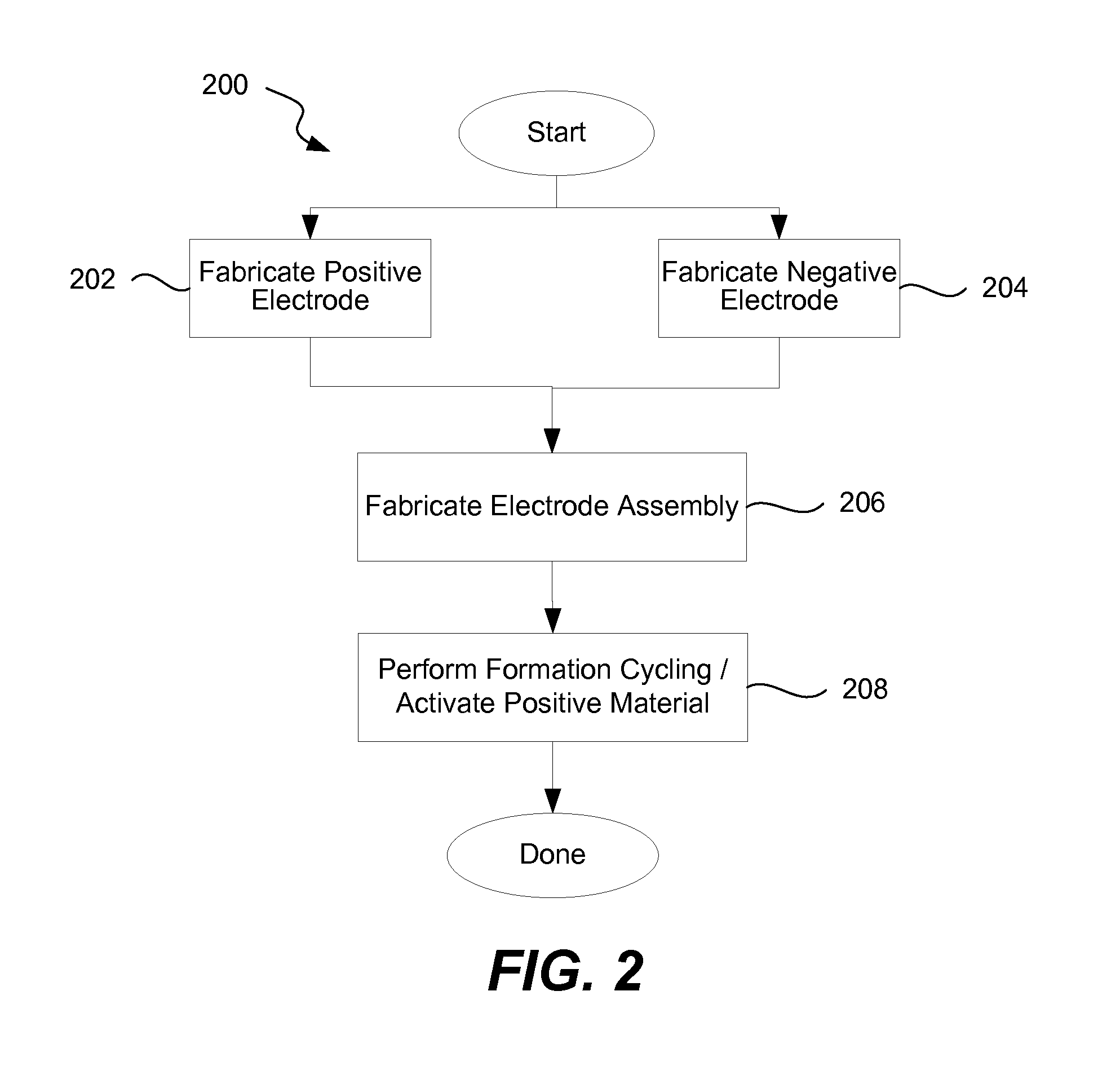Variable capacity cell assembly
a cell and variable capacity technology, applied in the direction of secondary cell servicing/maintenance, primary cell maintenance/service, sustainable manufacturing/processing, etc., can solve the problems of reducing affecting the positive electrode capacity, etc., to achieve the effect of increasing the positive electrode capacity and high capacity
- Summary
- Abstract
- Description
- Claims
- Application Information
AI Technical Summary
Benefits of technology
Problems solved by technology
Method used
Image
Examples
Embodiment Construction
[0026]In the following description, numerous specific details are set forth in order to provide a thorough understanding of the present invention. The present invention may be practiced without some or all of these specific details. In other instances, well known process operations have not been described in detail to not unnecessarily obscure the present invention. While the invention will be described in conjunction with the specific embodiments, it will be understood that it is not intended to limit the invention to the embodiments.
I. INTRODUCTION
[0027]Many applications require high capacity cells that also have long cycle lives and are capable of operating at high currents (charge and discharge). For example, electrical vehicles would benefit from cells that are light weight (to minimize the overall weight of the vehicle for performance, safety, economy, and other reasons), small (to increase an interior space available for passengers), have a long cycle life (to increase batter...
PUM
| Property | Measurement | Unit |
|---|---|---|
| aspect ratio | aaaaa | aaaaa |
| length | aaaaa | aaaaa |
| porosity | aaaaa | aaaaa |
Abstract
Description
Claims
Application Information
 Login to View More
Login to View More - R&D
- Intellectual Property
- Life Sciences
- Materials
- Tech Scout
- Unparalleled Data Quality
- Higher Quality Content
- 60% Fewer Hallucinations
Browse by: Latest US Patents, China's latest patents, Technical Efficacy Thesaurus, Application Domain, Technology Topic, Popular Technical Reports.
© 2025 PatSnap. All rights reserved.Legal|Privacy policy|Modern Slavery Act Transparency Statement|Sitemap|About US| Contact US: help@patsnap.com



